-
 bitcoin
bitcoin $124586.364639 USD
0.62% -
 ethereum
ethereum $4670.671710 USD
3.33% -
 xrp
xrp $2.983701 USD
0.18% -
 tether
tether $1.000175 USD
-0.03% -
 bnb
bnb $1209.430642 USD
2.76% -
 solana
solana $231.365861 USD
0.51% -
 usd-coin
usd-coin $0.999665 USD
-0.02% -
 dogecoin
dogecoin $0.264657 USD
4.46% -
 tron
tron $0.346415 USD
1.60% -
 cardano
cardano $0.871586 USD
3.70% -
 chainlink
chainlink $23.451270 USD
7.56% -
 hyperliquid
hyperliquid $46.860071 USD
-2.96% -
 ethena-usde
ethena-usde $1.000120 USD
0.04% -
 sui
sui $3.611279 USD
1.08% -
 stellar
stellar $0.407149 USD
0.96%
DeFi liquidation risk is high? How to set a safety margin?
DeFi's high liquidation risk can be mitigated by setting a safety margin, which acts as a buffer against market volatility and sudden price drops.
May 08, 2025 at 04:01 am
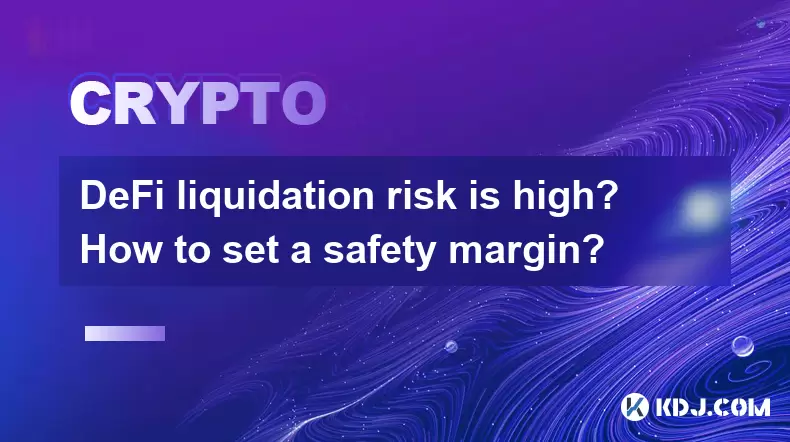
DeFi, or Decentralized Finance, has transformed the way individuals interact with financial services by offering an open, permissionless, and transparent ecosystem. However, one of the key risks associated with DeFi platforms is the potential for liquidation. Liquidation risk in DeFi can be high, especially for those who are not well-versed in managing their positions. This article will explore the intricacies of DeFi liquidation risk and provide a comprehensive guide on how to set a safety margin to mitigate this risk.
Understanding DeFi Liquidation
In DeFi, liquidation occurs when the value of collateral falls below a certain threshold, known as the liquidation threshold. This often happens in lending and borrowing protocols where users deposit collateral to borrow assets. If the value of the collateral drops significantly, the protocol may liquidate the collateral to cover the borrowed amount. The risk of liquidation is higher in volatile markets, as the value of the collateral can fluctuate rapidly.
Factors Contributing to High Liquidation Risk
Several factors can contribute to the high liquidation risk in DeFi. One key factor is the volatility of cryptocurrencies, which can lead to sudden drops in collateral value. Additionally, the use of leverage can amplify this risk, as borrowing more than one can afford increases the likelihood of liquidation. Poor risk management and lack of understanding of DeFi protocols can also lead to higher liquidation risks.
Setting a Safety Margin: Why It's Important
A safety margin, also known as a buffer or cushion, is an additional amount of collateral that users can deposit to protect against liquidation. Setting a safety margin is crucial because it provides a layer of protection against market volatility and unexpected price movements. By maintaining a higher safety margin, users can reduce the likelihood of their positions being liquidated.
How to Calculate Your Safety Margin
Calculating the appropriate safety margin involves several steps. First, determine the liquidation threshold of the DeFi protocol you are using. This threshold is usually expressed as a percentage of the borrowed amount. For example, if the liquidation threshold is 80%, your collateral must be worth at least 80% of the borrowed amount to avoid liquidation.
- Assess the volatility of the collateral asset: If the asset is highly volatile, you may need a higher safety margin.
- Consider the duration of your position: Longer positions may require a larger safety margin to account for potential price fluctuations over time.
- Evaluate your risk tolerance: If you are more risk-averse, you may want to set a higher safety margin.
Practical Steps to Set Your Safety Margin
Setting a safety margin in DeFi involves a few practical steps. Here’s how you can do it:
- Log into your DeFi platform: Access the platform where you have your lending or borrowing position.
- Navigate to your position: Find the specific position for which you want to set a safety margin.
- Calculate the required safety margin: Use the formula:
Safety Margin = (Borrowed Amount / Liquidation Threshold) - Borrowed Amount. For example, if you borrowed 1000 USDT with a liquidation threshold of 80%, your required safety margin would be(1000 / 0.8) - 1000 = 250 USDT. - Deposit additional collateral: Add the calculated safety margin to your position. In the above example, you would need to deposit an additional 250 USDT worth of collateral.
- Monitor your position: Regularly check the value of your collateral and the borrowed amount to ensure your safety margin remains adequate.
Adjusting Your Safety Margin
It’s important to regularly adjust your safety margin based on market conditions and the performance of your collateral. If the market becomes more volatile, you may need to increase your safety margin. Conversely, if the market stabilizes, you might be able to reduce it slightly. Monitoring and adjusting your safety margin is an ongoing process that requires attention to market trends and your specific position.
Tools and Resources for Managing Liquidation Risk
Several tools and resources can help you manage liquidation risk in DeFi. DeFi analytics platforms like DeFi Pulse and Zapper provide real-time data on your positions and can help you monitor your safety margin. Price alert services can notify you when the value of your collateral approaches the liquidation threshold, allowing you to take action before it’s too late. Educational resources and community forums can also provide valuable insights and tips on managing liquidation risk effectively.
Case Studies: Real-World Examples of Liquidation Risk
Examining real-world examples can provide valuable lessons on managing liquidation risk. In one case, a user on a popular DeFi lending platform experienced liquidation due to a sudden drop in the value of their collateral. The user had not set a sufficient safety margin, and the rapid price movement led to the liquidation of their position. In another example, a user successfully avoided liquidation by regularly monitoring their position and adjusting their safety margin based on market conditions. These case studies highlight the importance of proactive risk management in DeFi.
Frequently Asked Questions
Q: Can I recover my assets after liquidation in DeFi?A: In most cases, once your position is liquidated, the collateral is used to repay the borrowed amount, and any remaining value is returned to you. However, the specifics can vary depending on the DeFi protocol and the terms of the liquidation.
Q: How often should I check my safety margin?A: It’s advisable to check your safety margin at least daily, especially in volatile markets. Setting up price alerts can help you stay informed without constant manual monitoring.
Q: Are there any DeFi platforms that offer automatic safety margin adjustments?A: Some DeFi platforms are beginning to offer features like automatic safety margin adjustments based on market conditions. However, these features are not yet widespread, and it’s important to understand the terms and conditions of such services before using them.
Q: Can I use multiple types of collateral to set a safety margin?A: Yes, many DeFi platforms allow you to use multiple types of collateral to secure your position. This can help diversify your risk and potentially increase your safety margin. Always check the specific platform’s rules regarding multiple collateral types.
Disclaimer:info@kdj.com
The information provided is not trading advice. kdj.com does not assume any responsibility for any investments made based on the information provided in this article. Cryptocurrencies are highly volatile and it is highly recommended that you invest with caution after thorough research!
If you believe that the content used on this website infringes your copyright, please contact us immediately (info@kdj.com) and we will delete it promptly.
- BlockDAG, DOGE, HYPE Sponsorship: Crypto Trends Shaping 2025
- 2025-10-01 00:25:13
- Deutsche Börse and Circle: A StableCoin Adoption Powerhouse in Europe
- 2025-10-01 00:25:13
- BlockDAG's Presale Buzz: Is It the Crypto to Watch in October 2025?
- 2025-10-01 00:30:13
- Bitcoin, Crypto, and IQ: When Genius Meets Digital Gold?
- 2025-10-01 00:30:13
- Stablecoins, American Innovation, and Wallet Tokens: The Next Frontier
- 2025-10-01 00:35:12
- NBU, Coins, and Crypto in Ukraine: A New Yorker's Take
- 2025-10-01 00:45:14
Related knowledge

How to track DeFi activity on a block explorer
Sep 04,2025 at 05:36pm
Bitcoin's Role in Decentralized Finance1. Bitcoin remains the cornerstone of the cryptocurrency ecosystem, serving as both a store of value and a benc...
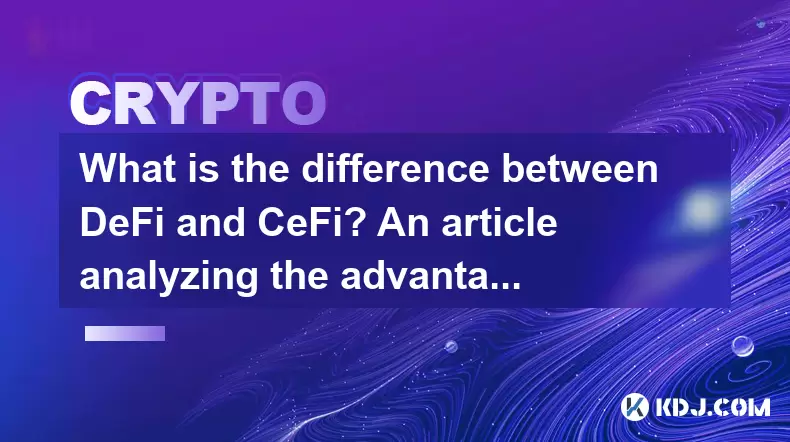
What is the difference between DeFi and CeFi? An article analyzing the advantages and disadvantages of both
Jun 13,2025 at 03:57am
Understanding the Foundations of DeFi and CeFiTo fully grasp the difference between DeFi (Decentralized Finance) and CeFi (Centralized Finance), it’s ...
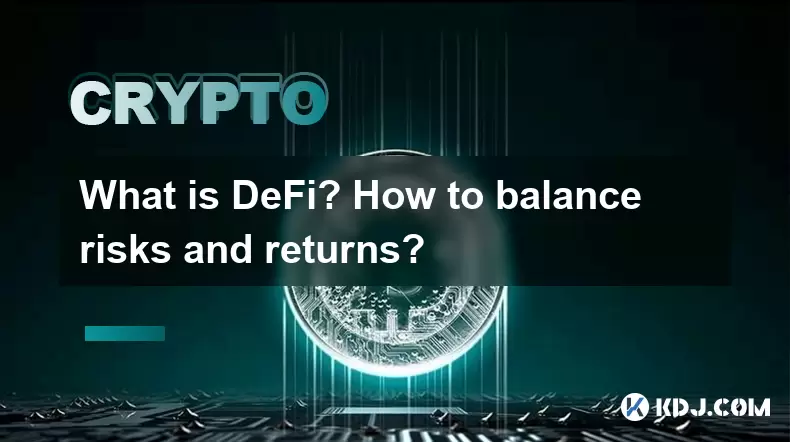
What is DeFi? How to balance risks and returns?
May 31,2025 at 12:22pm
What is DeFi? How to Balance Risks and Returns? Decentralized Finance, commonly known as DeFi, represents a revolutionary shift in the financial ecosy...
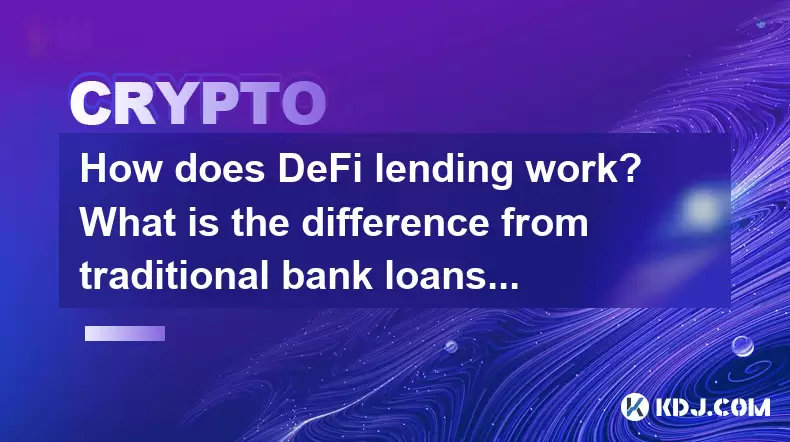
How does DeFi lending work? What is the difference from traditional bank loans?
May 29,2025 at 05:36pm
Introduction to DeFi LendingDeFi lending, or decentralized finance lending, represents a revolutionary shift in the way borrowing and lending are cond...
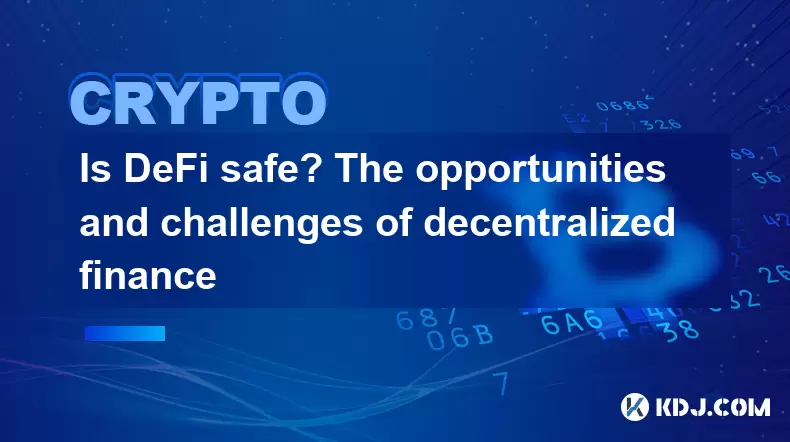
Is DeFi safe? The opportunities and challenges of decentralized finance
May 27,2025 at 02:28pm
Decentralized Finance, commonly known as DeFi, has revolutionized the financial landscape by offering a range of financial services without the need f...

DeFi Mining Tutorial: How to Maximize Profits and Reduce Risks?
May 27,2025 at 07:42am
DeFi, or Decentralized Finance, has opened up a new world of opportunities for crypto enthusiasts looking to maximize their profits through various mi...

How to track DeFi activity on a block explorer
Sep 04,2025 at 05:36pm
Bitcoin's Role in Decentralized Finance1. Bitcoin remains the cornerstone of the cryptocurrency ecosystem, serving as both a store of value and a benc...

What is the difference between DeFi and CeFi? An article analyzing the advantages and disadvantages of both
Jun 13,2025 at 03:57am
Understanding the Foundations of DeFi and CeFiTo fully grasp the difference between DeFi (Decentralized Finance) and CeFi (Centralized Finance), it’s ...

What is DeFi? How to balance risks and returns?
May 31,2025 at 12:22pm
What is DeFi? How to Balance Risks and Returns? Decentralized Finance, commonly known as DeFi, represents a revolutionary shift in the financial ecosy...

How does DeFi lending work? What is the difference from traditional bank loans?
May 29,2025 at 05:36pm
Introduction to DeFi LendingDeFi lending, or decentralized finance lending, represents a revolutionary shift in the way borrowing and lending are cond...

Is DeFi safe? The opportunities and challenges of decentralized finance
May 27,2025 at 02:28pm
Decentralized Finance, commonly known as DeFi, has revolutionized the financial landscape by offering a range of financial services without the need f...

DeFi Mining Tutorial: How to Maximize Profits and Reduce Risks?
May 27,2025 at 07:42am
DeFi, or Decentralized Finance, has opened up a new world of opportunities for crypto enthusiasts looking to maximize their profits through various mi...
See all articles










































































